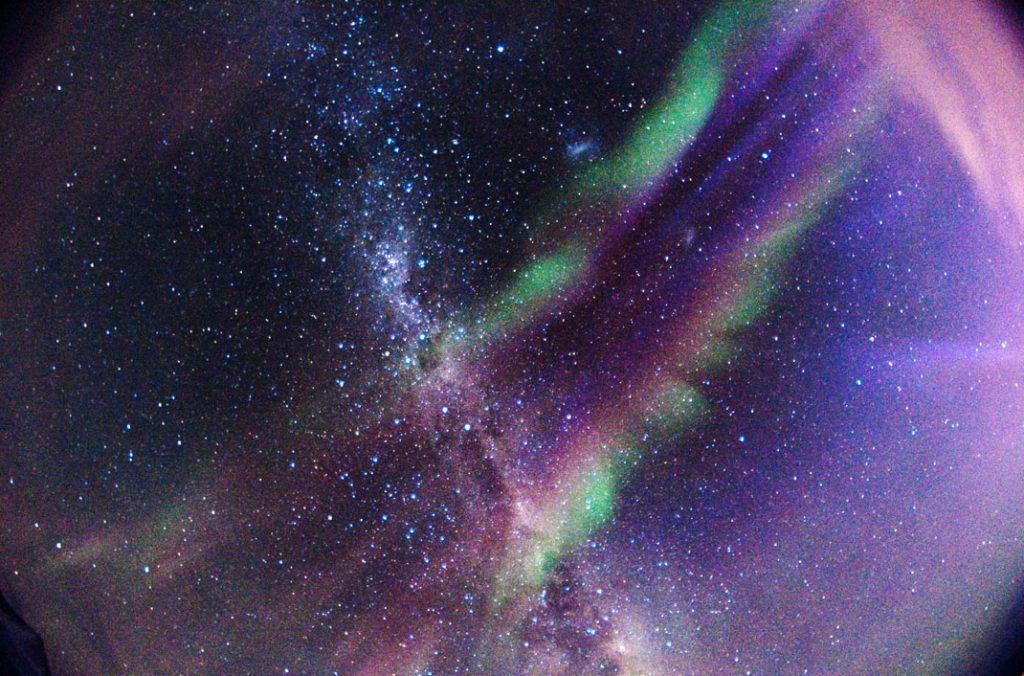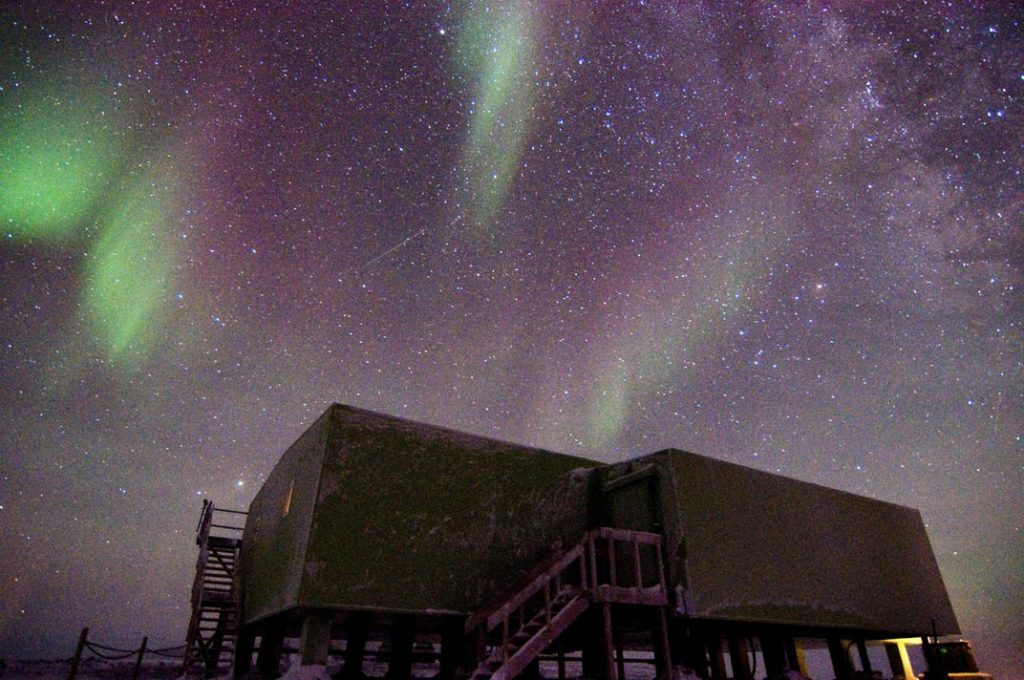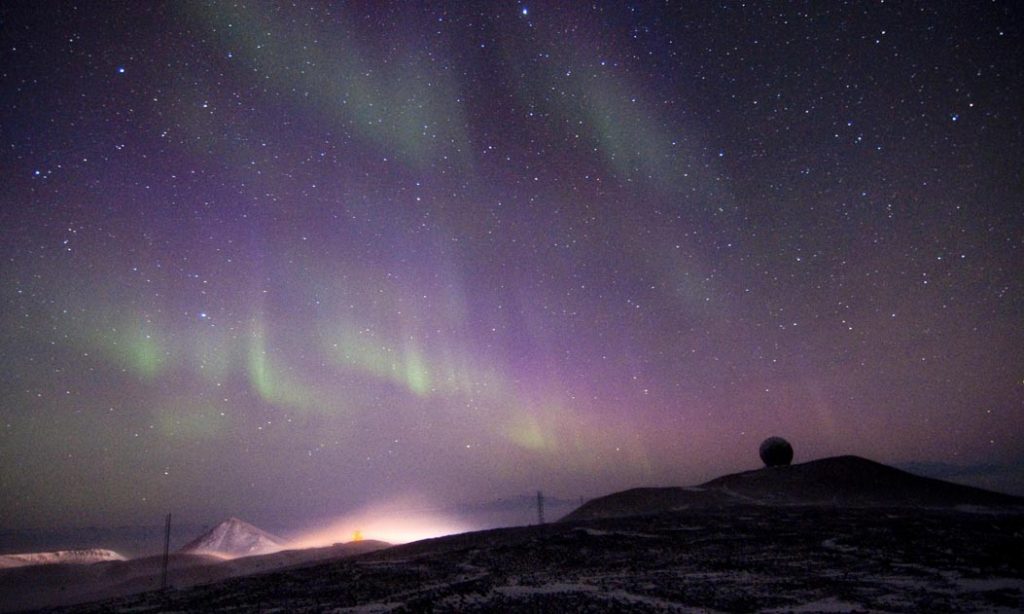Although my advisor, Dr. Chu, is quite happy with the data collected in March, it is my obligation to get enough data. I am determined to collect lidar data as much as possible. At the beginning of April, I thought the weather would be better and better, but the fact is that it was worse than March.
As the nights are getting longer and longer, there are more and more challenges. The first challenge is that it is very hard to judge whether the sky is clear enough to take data. The night of 6 April 2011, I rushed to Arrival Heights to prepare for taking data. When I just got off my truck, I saw a huge “X” above my head. One was Milk way, but what was the other, light green “clouds” moving back and forth? The whole sky was brilliantly lighted up. My mind went blank for several minutes. It was so beautiful and so quiet. When I realized it was an aurora, it was already a few minutes later. I hurried to set up my camera and took the shot. It was the first time I saw aurora at McMurdo, at Antarctic. It was cool!
Exciting data were collected on 7-8 April 2011 when aurora activities were very strong over Arrival Heights again. I didn’t have a chance to take data the previous night. Now the system had been taking data for almost 24 hours. The aurora started at midnight of 7 April, and lit the sky until early morning 8 April. Accompanied with the aurora event, the data collected 7-8 April showed a lot of interesting and exciting phenomena. Further study is already going on.
The ice was frozen by the end of March, but somehow it opened again in mid-April. The bad weather conditions prevented me from collecting data for about 10 days. In one week, there were two storms and more than 3 days were Condition Two. The open water increased humidity, and pushed the temperature up to -5 Celsius degree once in awhile — incredibly warm. However, strong turbulence generated strong wind gusts. The strongest wind was over 100 knots. Toward the end of April, the air began to calm.
During this time, I worked with Sean to resolve the cold-air-ducting problem, which has intolerable negative influences on the performance of two turning mirrors. Once I opened the caps of the beam tubes, the cold air could be ducted to the turning mirrors and could cool the mirrors and mirror mounts down to -1 Celsius degree. The huge temperature change led to a dramatic drifting of the positions of turning mirrors. Dr. Chu and I designed a simple setup, using two heat guns blowing upward air through the beam tubes. I told our ideas to Sean. Sean is the supervisor of Science Support Center and has done numerous winters over at McMurdo. He helped me to implement the ideas and did a great job on installing the “anti-cold air” device.





